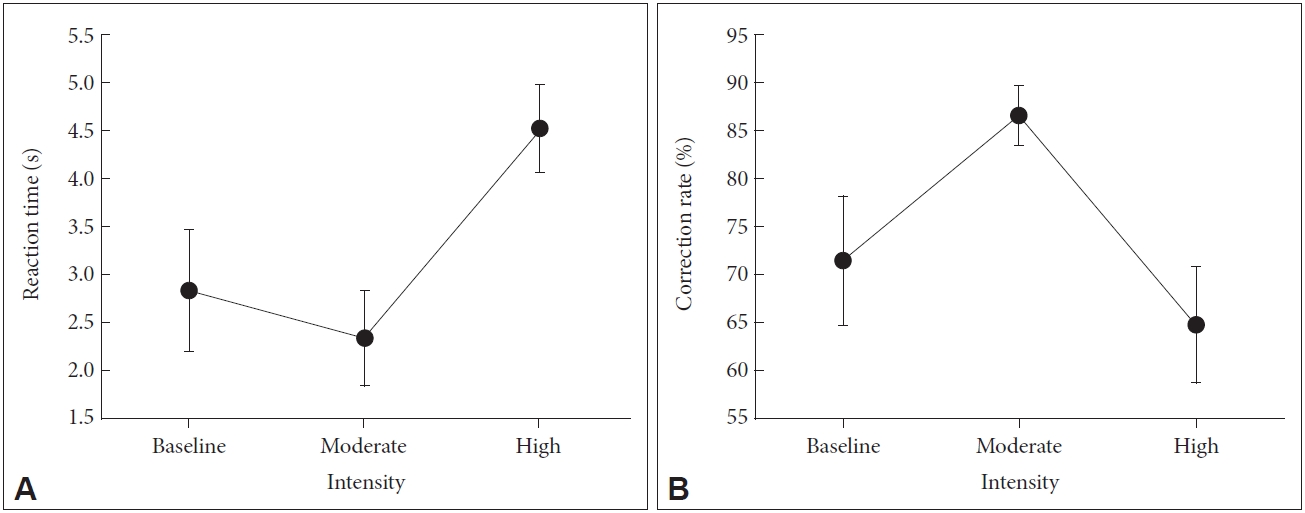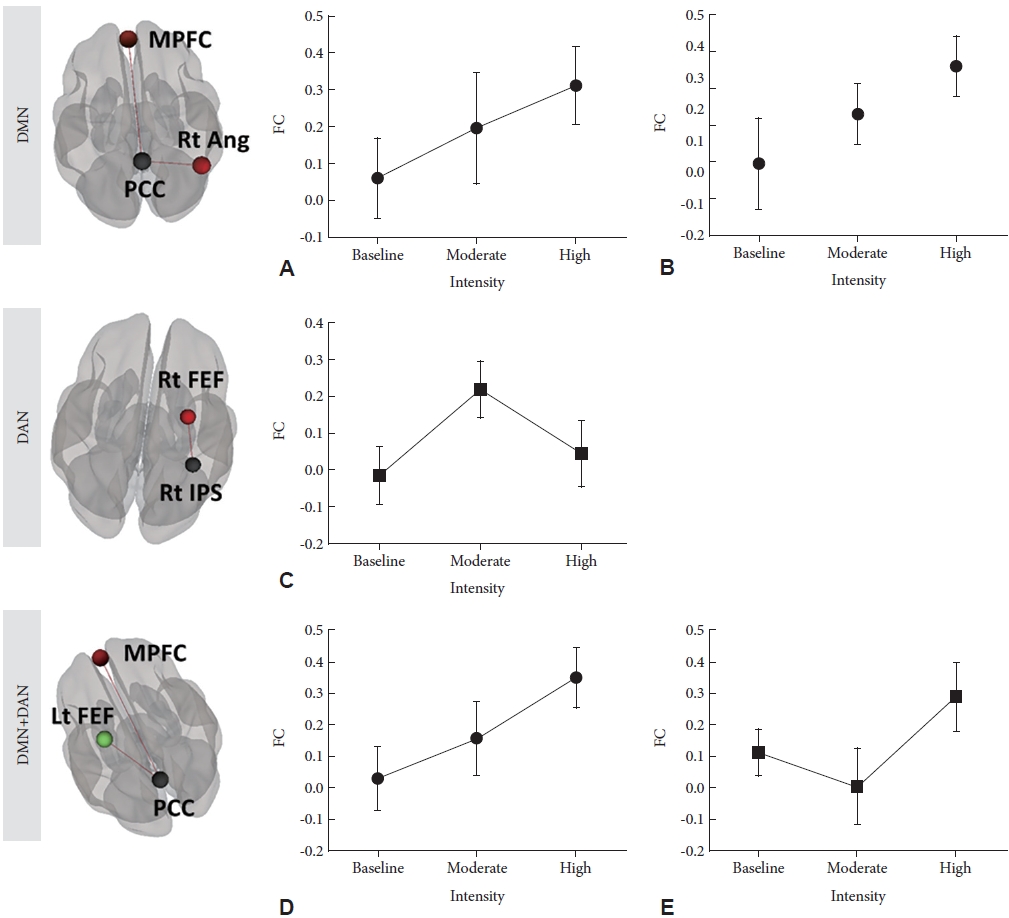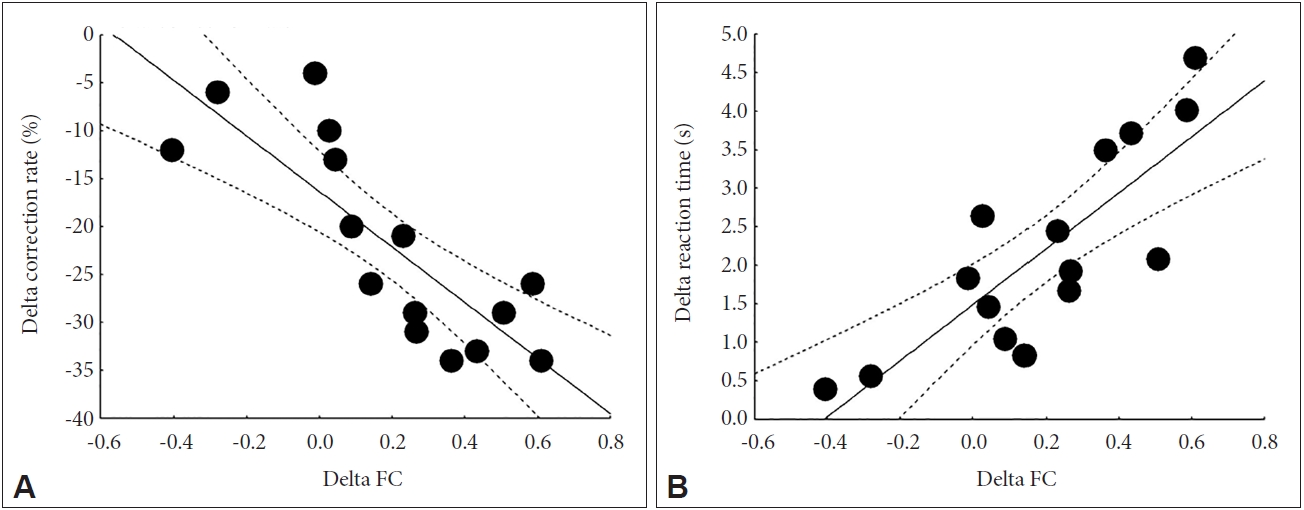3. Lambourne K, Tomporowski P. The effect of exercise-induced arousal on cognitive task performance: a meta-regression analysis. Brain Res 2010;1341:12-24.


4. Chang YK, Labban JD, Gapin JI, Etnier JL. The effects of acute exercise on cognitive performance: a meta-analysis. Brain Res 2012;1453:87-101.


5. Yanagisawa H, Dan I, Tsuzuki D, Kato M, Okamoto M, Kyutoku Y, et al. Acute moderate exercise elicits increased dorsolateral prefrontal activation and improves cognitive performance with Stroop test. Neuroimage 2010;50:1702-1710.


8. McMorris T, Graydon J. The effect of exercise on cognitive performance in soccer-specific tests. J Sports Sci 1997;15:459-468.


9. Yerkes RM, Dodson JD. The relation of strength of stimulus to rapidity of habit-formation. J Comp Neurol 1908;18:459-482.

10. Fukuda K, Woodman GF, Vogel EK. Individual differences in visual working memory capacity: contributions of attentional control to storage. In: Jolicoeur P, Lefebvre C, Martinez-Trujillo J, editor. Mechanisms of sensory working memory: attention and performance XXV. San Diego, CA: Academic Press, 2015, p. 105-119.
14. Choi JW, Han DH, Kang KD, Jung HY, Renshaw PF. Aerobic exercise and attention deficit hyperactivity disorder: brain research. Med Sci Sports Exerc 2015;47:33-39.


16. Chan ST, Evans KC, Song TY, Selb J, van der Kouwe A, Rosen BR, et al. Dynamic brain-body coupling of breath-by-breath O
2-CO
2 exchange ratio with resting state cerebral hemodynamic fluctuations. PLoS One 2020;15:e0238946



18. Buckner RL, Andrews-Hanna JR, Schacter DL. The brain’s default network: anatomy, function, and relevance to disease. Ann N Y Acad Sci 2008;1124:1-38.

19. Broyd SJ, Demanuele C, Debener S, Helps SK, James CJ, Sonuga-Barke EJ. Default-mode brain dysfunction in mental disorders: a systematic review. Neurosci Biobehav Rev 2009;33:279-296.


24. Hillman CH, Pontifex MB, Raine LB, Castelli DM, Hall EE, Kramer AF. The effect of acute treadmill walking on cognitive control and academic achievement in preadolescent children. Neuroscience 2009;159:1044-1054.


25. McMorris T, Sproule J, Turner A, Hale BJ. Acute, intermediate intensity exercise, and speed and accuracy in working memory tasks: a metaanalytical comparison of effects. Physiol Behav 2011;102:421-428.


26. Karvonen J, Vuorimaa T. Heart rate and exercise intensity during sports activities. Practical application. Sports Med 1988;5:303-311.

27. Robergs RA, Landwehr R. The surprising history of the “HRmax=220- age” equation. J Exerc Physiol Online 2002;5:1-10.
29. Habacha H, Lejeune-Poutrain L, Margas N, Molinaro C. Effects of the axis of rotation and primordially solicited limb of high level athletes in a mental rotation task. Hum Mov Sci 2014;37:58-68.


30. Kim JK, Yum TH, Oh KJ, Park YS, Lee YH. Item analysis of K-WAIS standardization data. Korean J Clin Psychol 1992;11:1-10.
31. Anderson JS, Druzgal TJ, Lopez-Larson M, Jeong EK, Desai K, Yurgelun-Todd D. Network anticorrelations, global regression, and phaseshifted soft tissue correction. Hum Brain Mapp 2011;32:919-934.


32. Murphy K, Birn RM, Handwerker DA, Jones TB, Bandettini PA. The impact of global signal regression on resting state correlations: are anticorrelated networks introduced? Neuroimage 2009;44:893-905.


33. Calhoun VD, Liu J, Adali T. A review of group ICA for fMRI data and ICA for joint inference of imaging, genetic, and ERP data. Neuroimage 2009;45(1 Suppl):S163-S172.


34. Decroix L, Tonoli C, Soares DD, Tagougui S, Heyman E, Meeusen R. Acute cocoa flavanol improves cerebral oxygenation without enhancing executive function at rest or after exercise. Appl Physiol Nutr Metab 2016;41:1225-1232.


35. Lefferts WK, Babcock MC, Tiss MJ, Ives SJ, White CN, Brutsaert TD, et al. Effect of hypoxia on cerebrovascular and cognitive function during moderate intensity exercise. Physiol Behav 2016;165:108-118.


36. Thomason ME, Chang CE, Glover GH, Gabrieli JD, Greicius MD, Gotlib IH. Default-mode function and task-induced deactivation have overlapping brain substrates in children. Neuroimage 2008;41:1493-1503.


37. Anderson JS, Nielsen JA, Froehlich AL, DuBray MB, Druzgal TJ, Cariello AN, et al. Functional connectivity magnetic resonance imaging classification of autism. Brain 2011;134:3742-3754.


39. Smith KJ, Wong LE, Eves ND, Koelwyn GJ, Smirl JD, Willie CK, et al. Regional cerebral blood flow distribution during exercise: influence of oxygen. Respir Physiol Neurobiol 2012;184:97-105.


42. Fisher JP, Hartwich D, Seifert T, Olesen ND, McNulty CL, Nielsen HB, et al. Cerebral perfusion, oxygenation and metabolism during exercise in young and elderly individuals. J Physiol 2013;591:1859-1870.















